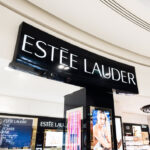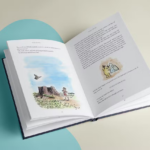Undoubtedly, Coca-Cola has won the battle against its competitors to create the world’s instantly recognisable Coca-Cola glass bottle.
As Andy Warhol said, “What’s great about this country is that America started the tradition where the richest consumers buy essentially the same things as the poorest. You can watch TV and see Coca-Cola, and you know that the President drinks Coke, Liz Taylor drinks Coke, and think, you can drink Coke, too.”
Coca-Cola, The World’s Most Recognisable Bottle, Wasn’t Distinctive Enough Back Then
The creation of the ‘perfect liquid wrapper’ was not an easy task. At that time, the challenge was to create a classic design distinguished from its competitors, like Koka-Nola, Ma Coca-Co, and Toka-Cola.
In that hunt, the designers eventually crafted a masterpiece, slightly modified over the years, that reflects more than 115 years of Coca-Cola‘s history.
Let’s explore how this desire to protect the brand ended up establishing the world-famous Coca-Cola glass bottle.
The Story Behind the Iconic Beginnings of the Coca-Cola Glass Bottle
The story behind the birth of a contour bottle is quite interesting. However, before its inception, some Coca-Cola iterations roamed around for decades. Coca-Cola was a soda fountain beverage until 1899, when two Chattanooga lawyers, Joseph Whitehead and Benjamin Thomas, acquired the bottling rights.
Soon after signing the contract, Coca-Cola hit massive sales in both fountain and bottle form. By 1920, over a thousand Coca-Cola bottling operations had been built. Although its competitors tried to copy the brand’s trademark, no one could beat the booming popularity of this American corporation.
Emergence of a Straight-Sided Bottle (1899 – 1906)
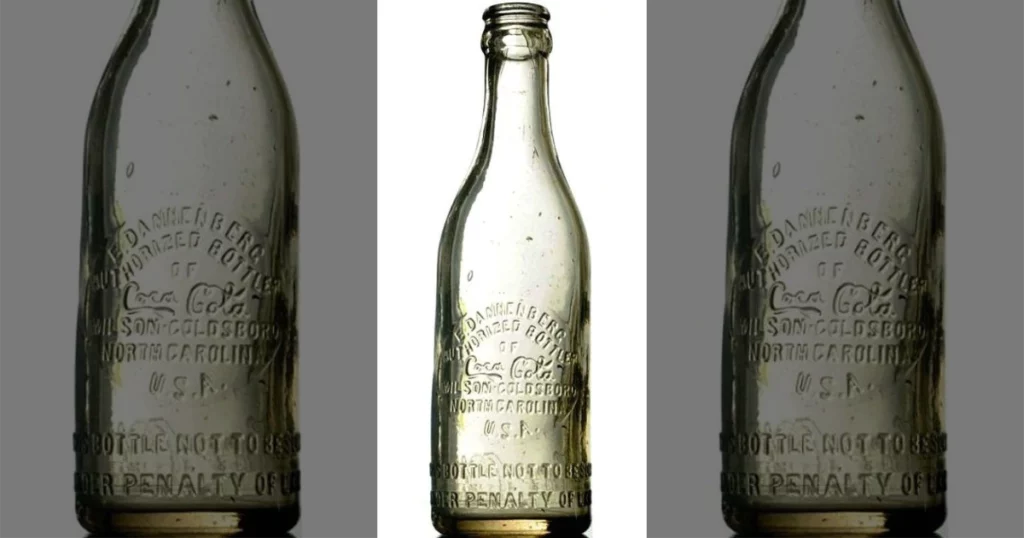
1899 marked the historic year when Coca-Cola embarked on a bottling expedition. At that time, the company unveiled its first bottling product, recognised as a straight-sided bottle concealing a multifaceted drink. That design truly reflected the aesthetic sense of that era when frills were assumed unnecessary.
Interestingly, the bottle integrated a splash of colours, including amber, blue, and green hues. Those strokes of colour were a manufacturing defect but became a trademark for the Coca-Cola glass bottle instead.
The Soda Pop Heard Around the World With Hutchinson Bottle (1906 – 1916)
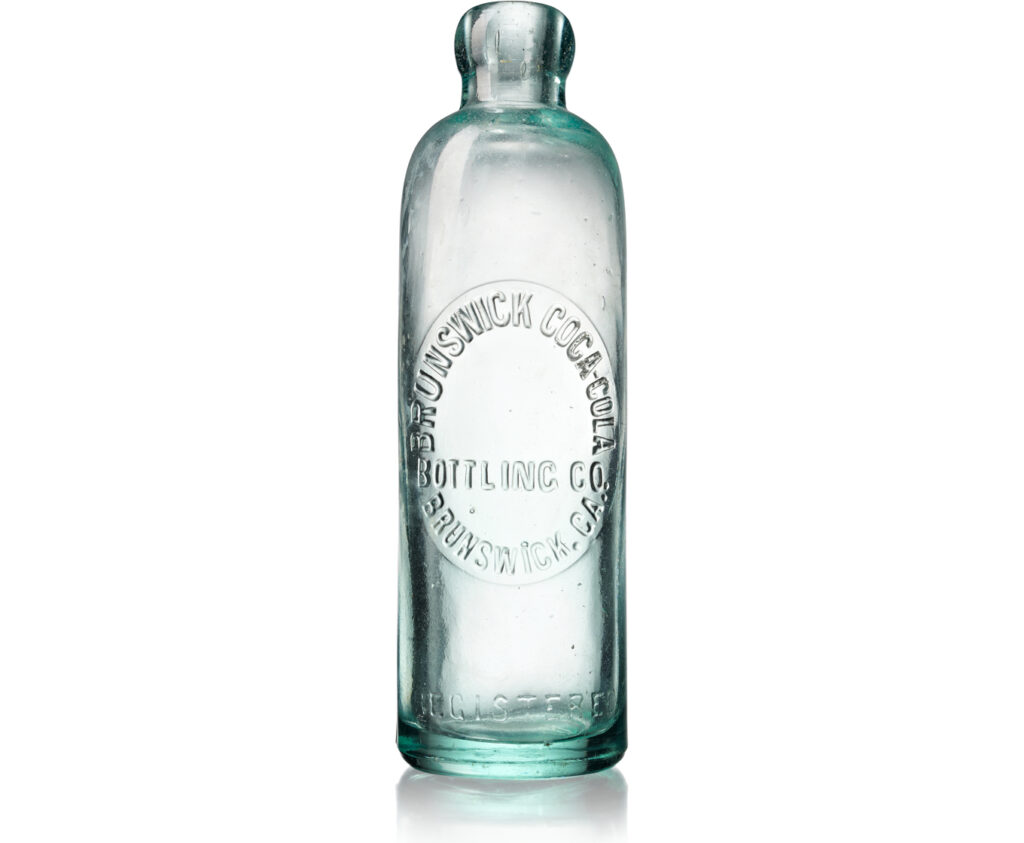
In 1906, Coca-Cola stepped forward with an innovative approach. The manufacturing of a Hutchinson bottle marked a bold step by the brand. It was not just a vessel, but an instrument of joy and refreshment. From the 1890s to the 1910s, the bottle design reigned popular throughout the country.
The Hutchinson bottle, or pop bottle, has a heavy horseshoe stopper attached to a rubber washer placed inside the bottle. The arrangement made a seal for the bottle. Once opened, the bubbling syrup inside the Coca-Cola bottle produced a satisfying pop. Ultimately, that became a sonic signature, coining the term ‘soda pop’ back then.
The Root Introduces the Root Bottle (1915)
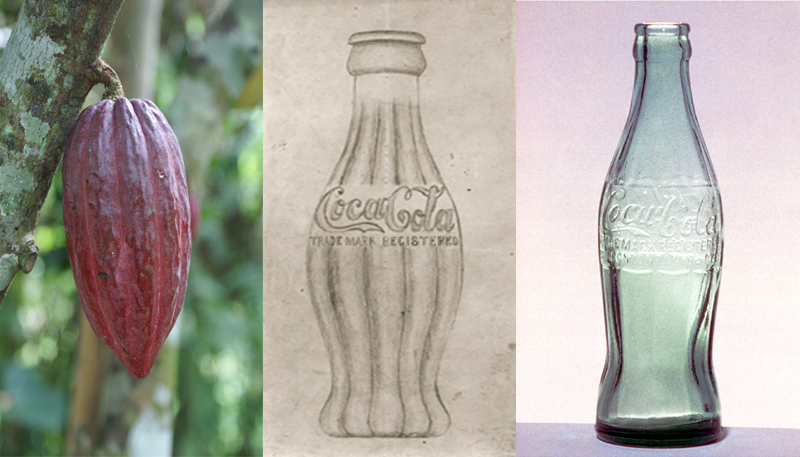
1915 marked a crucial part in Coca-Cola’s history. At that time, its straight-sided and Hutchinson bottles were not enough to produce a distinctive image of the brand. To rule out other copycats, the real struggle began. In Terre Haute, Indiana, the Root Glass Company stepped forward with a unique design.
The Root Company included C.J. and William Root, Alexander Samuelson, Earl R. Dean, and Clyde Edwards. Dean spearheaded the design team. Back then, Dean could not find anything more inspiring than the cocoa pod and transformed the Coca-Cola glass bottle into the shape of a pod.
The brilliance of the Root bottle design said all it needed to about the success of this new variation. One could distinguish it even in the dark or trace it in shattered pieces.
A Shape That Stands Out – Birth of the Contour Bottle (1916)
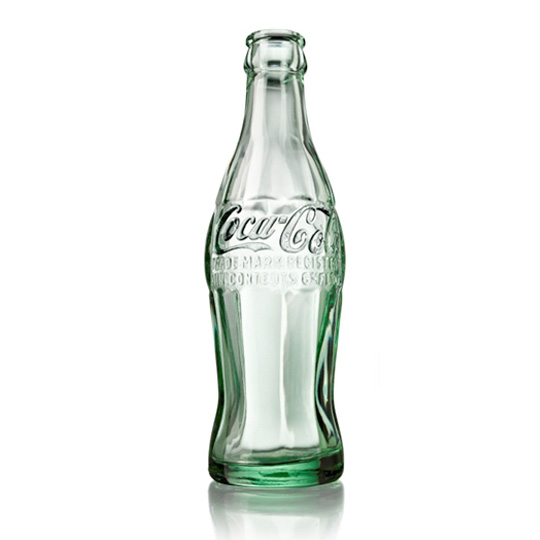
The Root bottle drew a physical representation of the brand’s identity. Starting from its linear indentations that added a new dimension to its curvature body, it became a global emblem of refreshment.
Dean’s Coca-Cola glass bottle sketch was instantly approved for moulding. Later, in November 1915, the bottle received its patent and was sent out for prototype manufacturing.
However, Dean’s sketch never made it to global production. Possibly, the main reason was its large middle diameter, which would distort its balance on the conveyor belt. Afterwards, Dean proposed another sketch with a reduced diameter, giving us the eternal contour shape.
Coca-Cola Glass Bottle in Painted Label (1955)
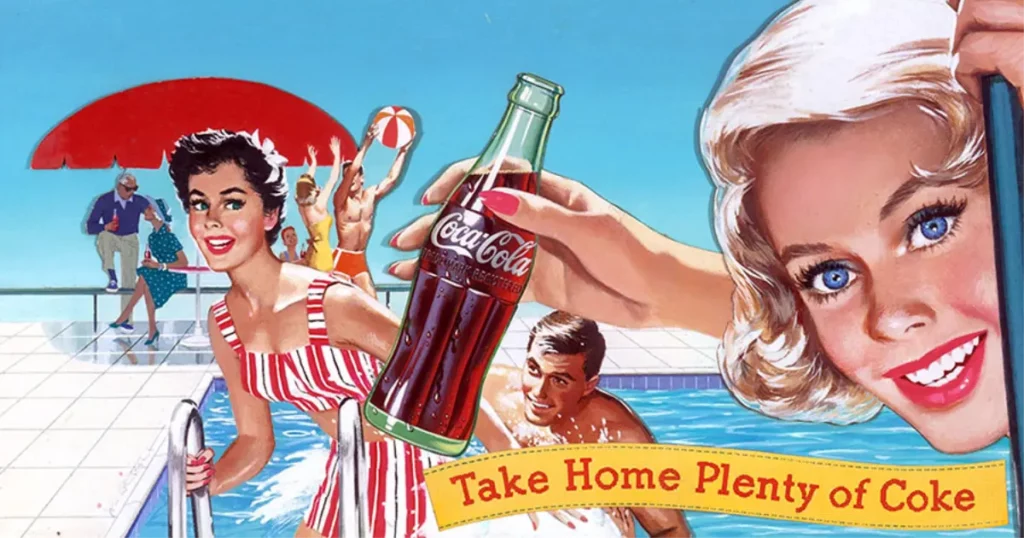
In 1955, a vibrant shift happened when Coca-Cola’s monochrome label was replaced by a ‘Painted Label’ or ‘Applied Colour Label.’ This was a new turn in Coca-Cola’s brand story.
The strategic move to incorporate vibrant and colourful designs helped captivate consumers’ eyes. Hence, the inviting pick ultimately enhanced the shelf appearance of the Coca-Cola brand.
An Unquenchable Thirst for More – King & Family Size Bottle (1955)
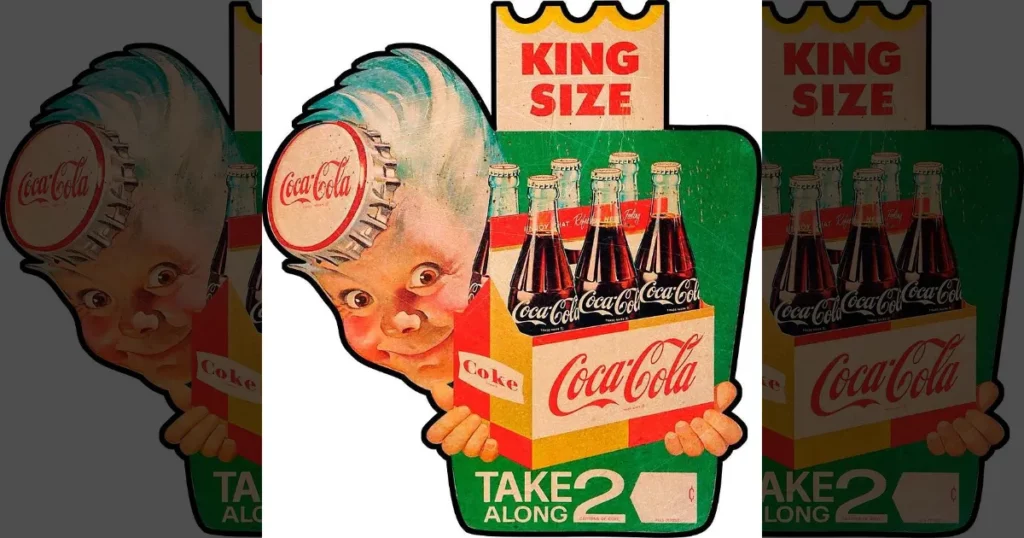
Initially, the Coca-Cola glass bottle encapsulated 6.5 ounces of the fizzy drink. But as its popularity and demand grew, the company landed at a new developmental horizon.
Responding to consumers’ demands, Coca-Cola launched the King Size (10- and 12-ounce) and Family Size (26-ounce) bottles. Soon after, the global drink began appearing at gatherings and family functions. This stance eventually proved to be a catalyst in gaining a ‘social beverage’ status for Coca-Cola.
A Shift Towards an Aesthetic Signal With a Diamond Label Bottle (1960)
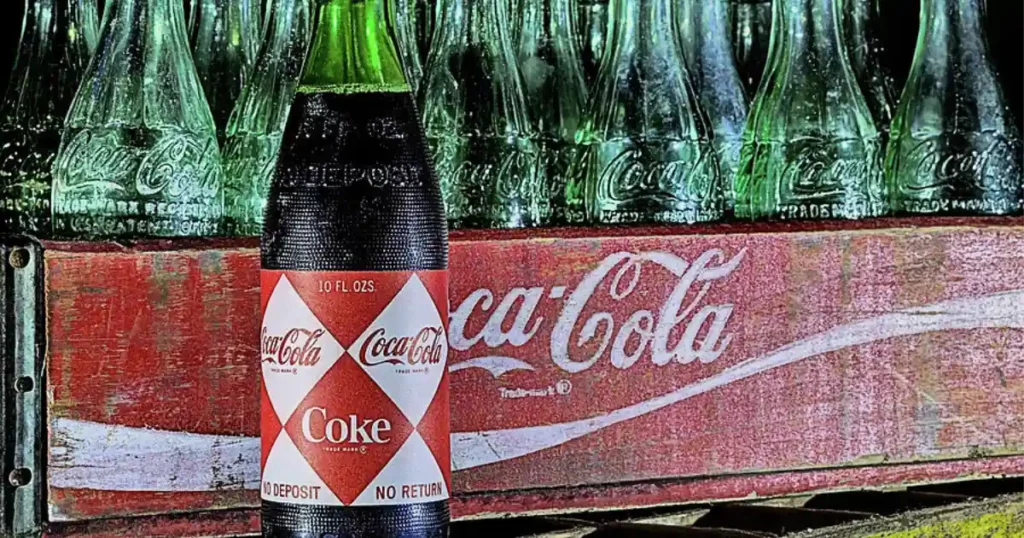
After becoming the heart of gatherings, the brand needed a newfound design to cope with the social upheaval and rising aspirations. Hence, to stay ahead of the curve, Coca-Cola introduced the ‘diamond label design.’ Moreover, the diamond design reflected the aesthetic sense of that era, symbolising elegance and sophistication.
A Ripple Effect – No Deposit No Return Policy (1964)

Opting for a customer service strategy, Coca-Cola introduced the ‘No Deposit No Return’ policy.
Following this, customers could keep their Coca-Cola glass bottles, eliminating the need to deposit or return them. The brand knew that returning the bottle was a pain point for the customers. Thus, to remove friction, this beverage company simplified its customer journey.
This shift in strategy not only boosted Coca-Cola’s sales but persuaded other companies to consider customers’ convenience. Consequently, this move significantly shaped industry trends at that time.
Embracing the Global Trend of Metrication (1970)

In 1970, the company embraced the global trend of metrication, integrating metric measurements in its labelling. By adopting this universal system, the brand showed solidarity with other brands globally, practising the same thing.
Eventually, this reflected that the trend was not just for convenience but a necessity of that era. Incorporating this global language helped break down barriers and speak to consumers in a simple language.
Introduction of the Plastic 2-litre Bottle (1977)

With the debut of a 2-litre plastic bottle in 1977, the Coca-Cola brand reflected a new level of consumer convenience. Moreover, by expanding its preference, the brand showed a willingness to adopt new materials and different manufacturing processes.
Ultimately, the invention allowed consumers to own lightweight and sizeable containers to stock their beloved drinks, either in cupboards or refrigerators.
The Dawn of the Aluminum Bottle (2005) & PlantBottle (2009)

The emergence of the 21st century instigated Coca-Cola to bring something new to the table. Therefore, the company heralded another innovation by introducing aluminium bottles and the PlantBottle in 2005 and 2009 respectively.
The birth of the aluminium bottle wasn’t just visually appealing but functional and portable. Afterwards, with the launch of PlantBottle, the company took an eco-conscious approach to minimise its environmental footprint. Here, the Coca-Cola company showcased its ability to balance innovation and practice towards sustainability.
Coca-Cola Presents a New Silhouette, ‘The Sleek Can’ (2016 – 2023)
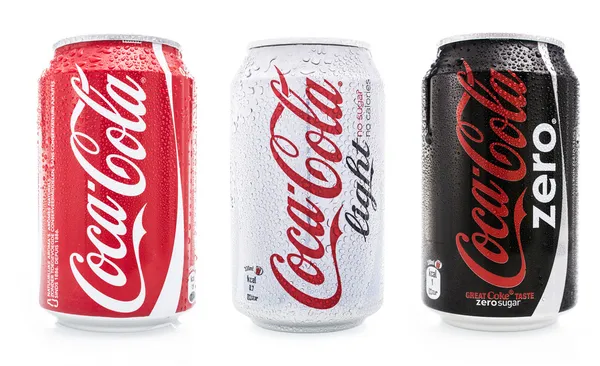
While showing its knack for reinvention, Coca-Cola stepped forward with another modern yet refreshing silhouette. Following the path of evolution, the company introduced sleek cans instead of conventional contour bottles. With these cans, the fizzy drink company imparted simplicity and modern aesthetics.
Moreover, the sleek cans led Coca-Cola to a “One Brand Strategy.” As a result, the brand rolled out Coca-Cola, Diet Coke, Coke Zero, and Coca-Cola Life under one cohesive visual identity.
120 Years of Coca-Cola History

The Coca-Cola glass bottle, or to be more precise, the Coke bottle, has gone through different stages of evolution: from the ‘hobble skirt‘ in the 1910s to the new sleek can in 2016. Therefore, each Coca-Cola bottle design reflects consumers’ preferences, shifts in trends, technological advancements, and a global appeal of innovation.
Being one of the most iconic and recognisable packaging designs, Coca-Cola has shared one of the most impactful branding stories ever. Given its constant innovation, no one can tell what its next bottle evolution would be. However, one thing for certain is that the new iteration will reflect its stable position in our global culture.

